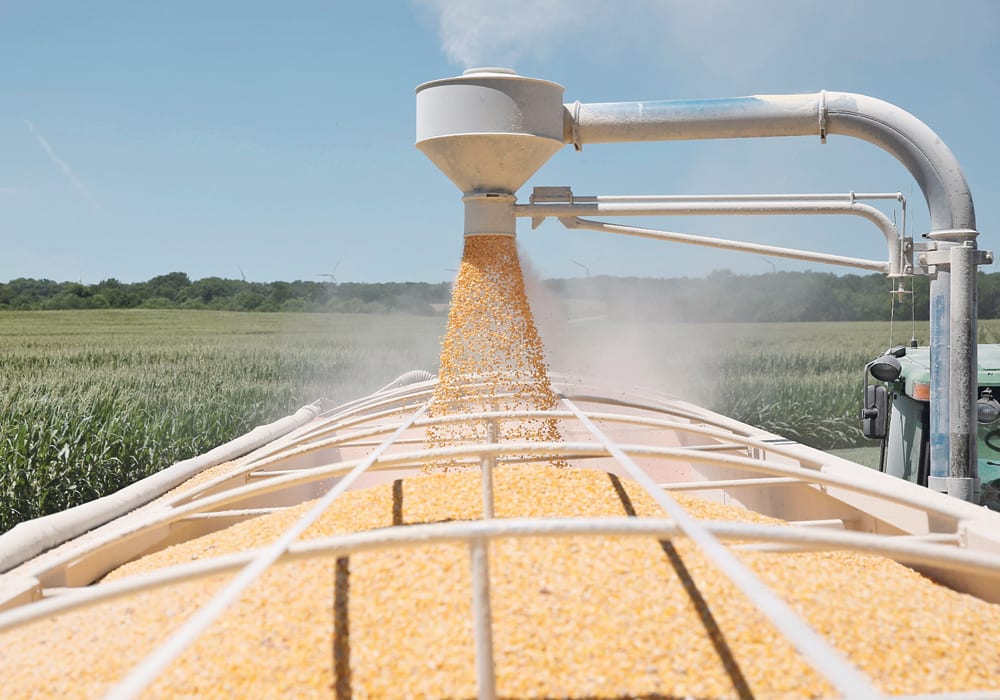Lifting restriction on E15 blends is expected to increase corn demand in the United States by two billion bushels
A new ethanol rule in the United States might have a massive or minimal impact on corn and other grain prices, depending on who you talk to.
U.S. President Donald Trump has announced he is ending restrictions on selling E15 ethanol blends, which is fuel containing 15 percent ethanol.
Gasoline retailers are currently prevented from selling E15 during the summer months.
According to Growth Energy, a biofuel trade association, 97 percent of the gasoline sold in the U.S. is an E10 blend.
It would like to see E15 capture a larger share of the market. Nine out of 10 vehicles on the road are equipped to use E15.
Read Also

Europe holds promise for Canadian lentils
Pulse Canada is trying to help boost lentil consumption in Europe, which is already the fourth largest market.
That is why ethanol manufacturers, corn growers and gasoline retailers were overjoyed with Trump’s announcement. It brings an end to a longstanding political battle with the oil industry.
“(This) is such welcome news and we’re thrilled,” Emily Skor, chief executive officer of Growth Energy, said during a conference call.
“It’s OK if it took so long if this is the place we landed.”
Kelly Nieuwenhuis, an Iowa farmer and director of the Iowa Corn Promotion Board, said the announcement is a rare victory for growers.
“As farmers we haven’t seen a lot of positive things happen recently but we see this announcement as a win,” he told reporters on the conference call.
Nieuwenhuis was asked what year-round E15 could do for U.S. corn demand.
“The numbers are all over the place as far as how much demand for corn this could be,” he said.
“I know the number two billion bushels has popped up a few times, and that’s not going to be an overnight thing, but with time and growth there’s that potential.”
That is how much Growth Energy expects annual corn demand to rise. That would be a 35 percent increase over the 5.65 billion bu. of corn currently consumed by the U.S. ethanol sector.
Two billion bu. of additional annual demand from ethanol would have a big impact on corn prices. It is almost as much as the 2.4 billion bu. that gets exported annually from the U.S.
Ben Buckner, chief grain analyst with AgResource Co., doesn’t buy that lofty estimate. He said 1,300 gas stations are equipped with E15 pumps in the U.S., and he doesn’t expect many more before summer.
Those stations would sell an estimated 227 million litres of additional ethanol during the three summer months that E15 used to be forbidden. That would require about 20 million extra bu. of corn.
“Mathematically, it doesn’t seem all that significant, at least for 2019,” he said.
Over time, more E15 pumps could pop up across the country and in the long term it could result in maybe 300 to 500 million bu. of additional corn demand, said Buckner.
That might boost corn prices by five to 10 cents a bushel annually, he added.
Mike Lorenz, executive vice-president for Sheetz, America’s top E15 retailer, fully expects more stations to adopt E15 pumps now that the fuel will be available year-round.
“This is going to be huge for us,” he said.
Drivers are creatures of habit when it comes to choosing their fuel, and they are confused when E15 disappears during certain times of the year.
Sales drop off during the summer and don’t rebound because drivers don’t like switching back and forth, so eliminating that downtime will be key to spurring E15 demand.
Lorenz said retailers already offering E15 will continue to do so and those that have been waiting on the sidelines will continue to do so until the Environmental Protection Agency’s new rule is finalized, which is probably too tight of a timeline to get pumps in place for the summer of 2019.
He said ethanol is much cheaper than gasoline, and E15 will be cheaper than E10, so he anticipates good demand for the fuel.
Skor said the EPA is going to try to get the new rule in place in time for this summer.
















